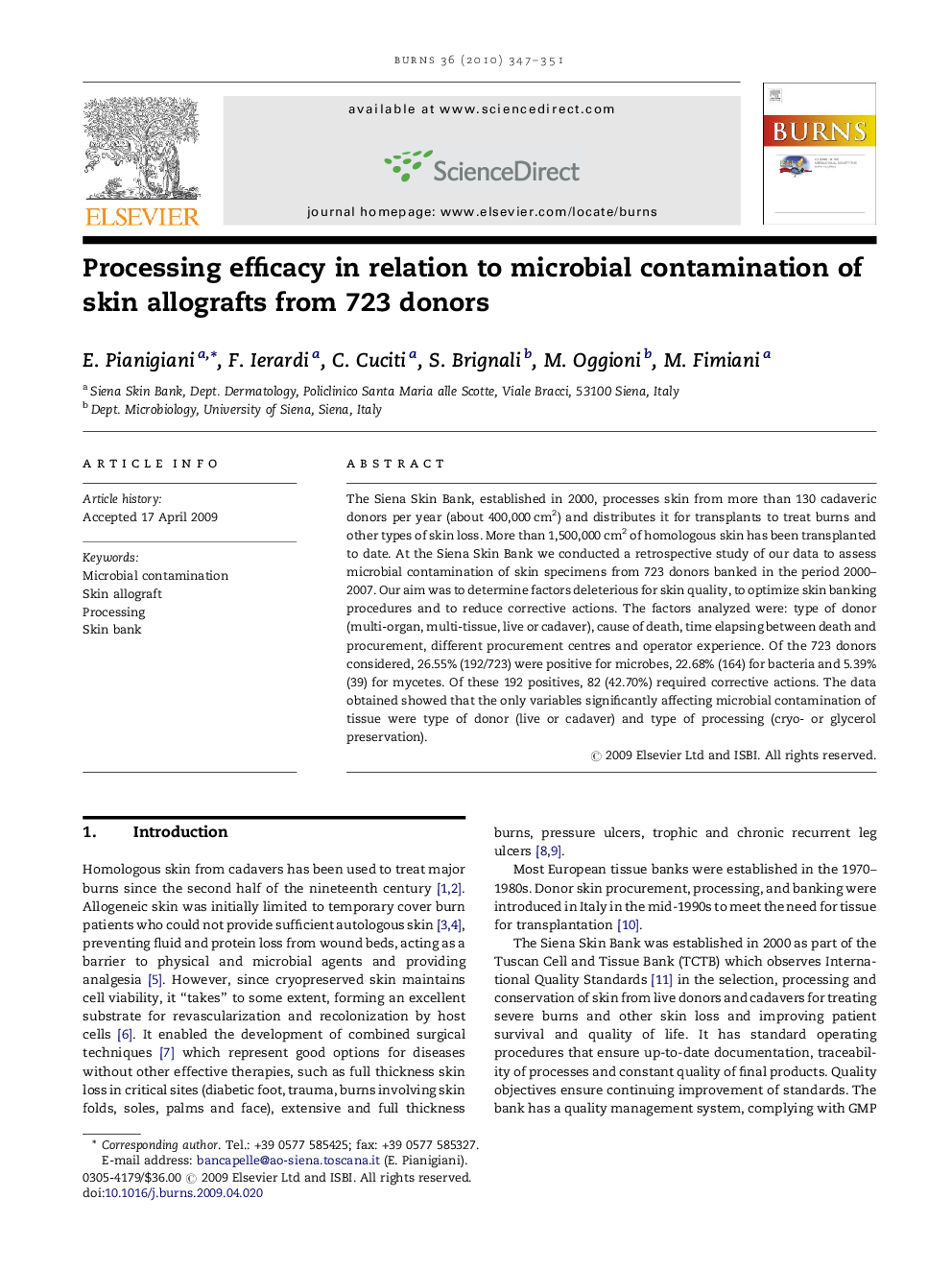| Article ID | Journal | Published Year | Pages | File Type |
|---|---|---|---|---|
| 3105819 | Burns | 2010 | 5 Pages |
The Siena Skin Bank, established in 2000, processes skin from more than 130 cadaveric donors per year (about 400,000 cm2) and distributes it for transplants to treat burns and other types of skin loss. More than 1,500,000 cm2 of homologous skin has been transplanted to date. At the Siena Skin Bank we conducted a retrospective study of our data to assess microbial contamination of skin specimens from 723 donors banked in the period 2000–2007. Our aim was to determine factors deleterious for skin quality, to optimize skin banking procedures and to reduce corrective actions. The factors analyzed were: type of donor (multi-organ, multi-tissue, live or cadaver), cause of death, time elapsing between death and procurement, different procurement centres and operator experience. Of the 723 donors considered, 26.55% (192/723) were positive for microbes, 22.68% (164) for bacteria and 5.39% (39) for mycetes. Of these 192 positives, 82 (42.70%) required corrective actions. The data obtained showed that the only variables significantly affecting microbial contamination of tissue were type of donor (live or cadaver) and type of processing (cryo- or glycerol preservation).
